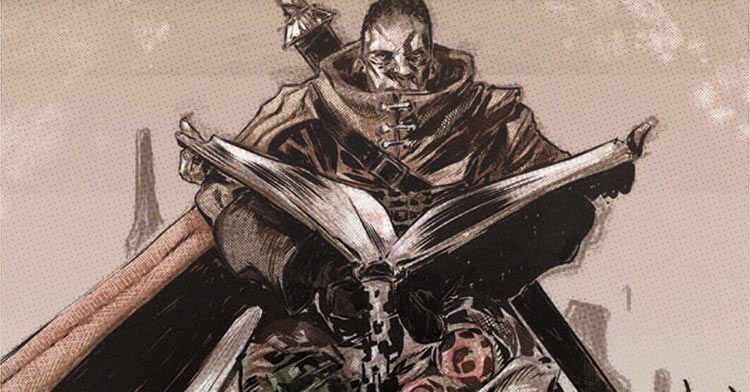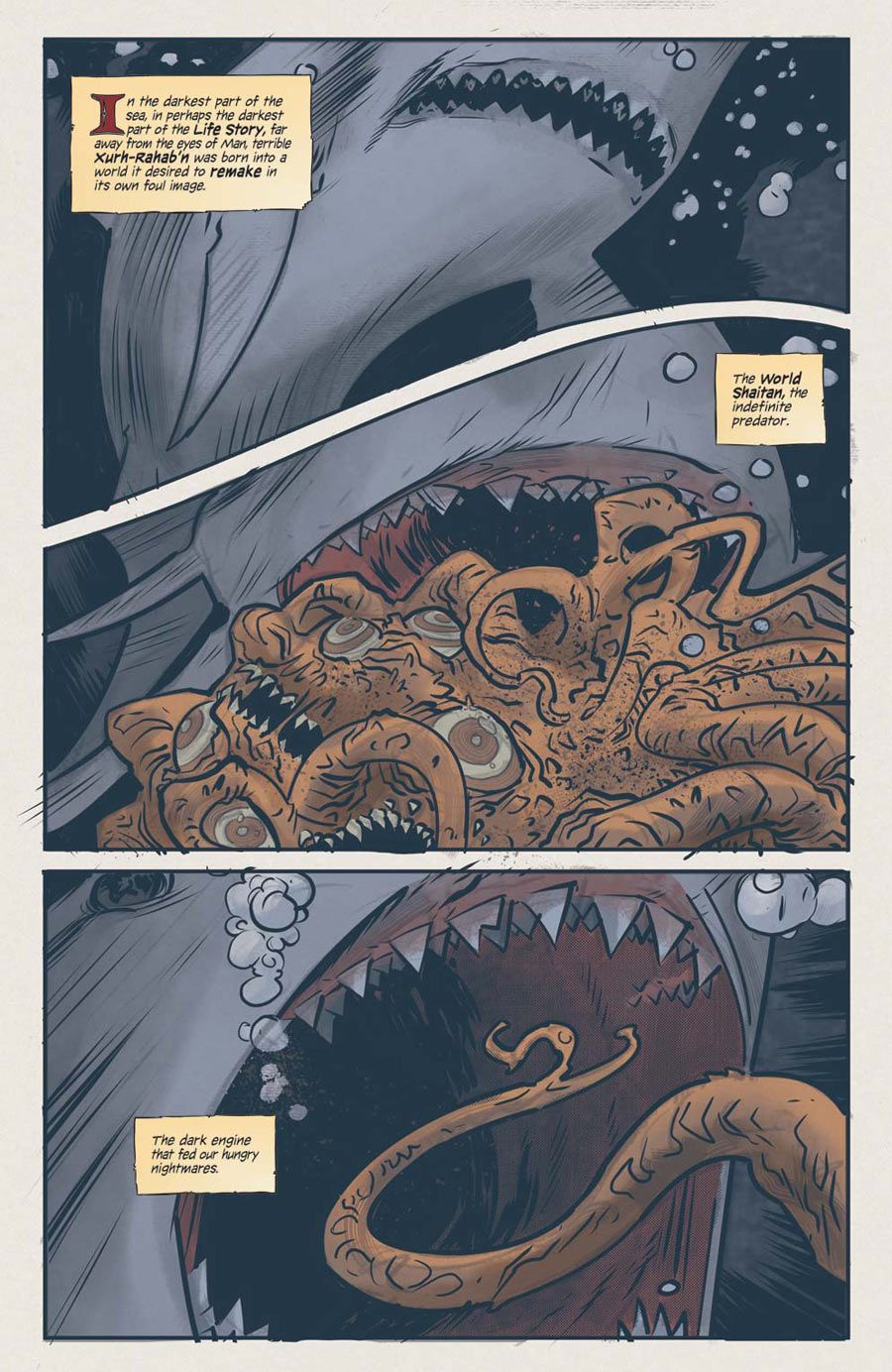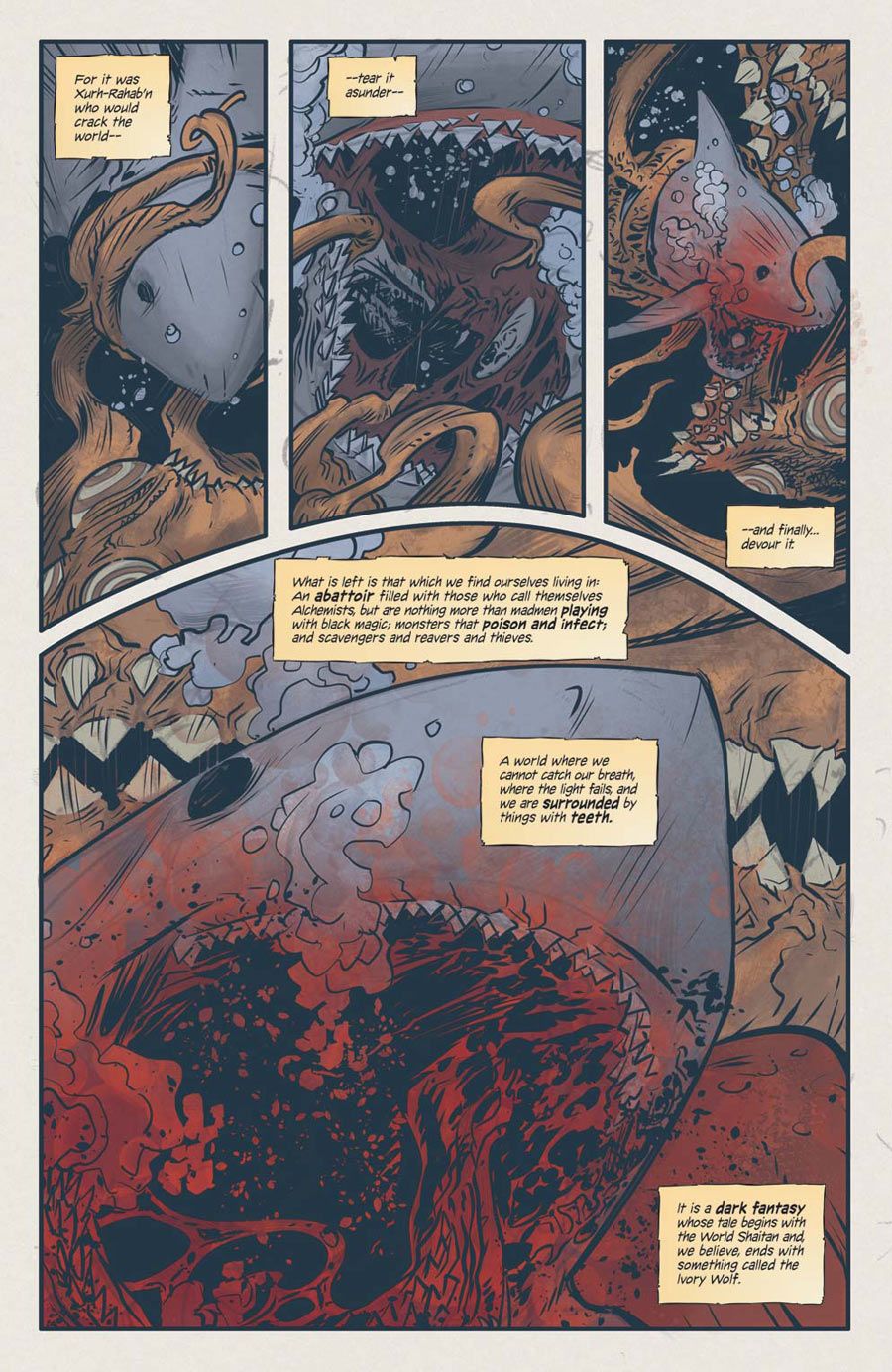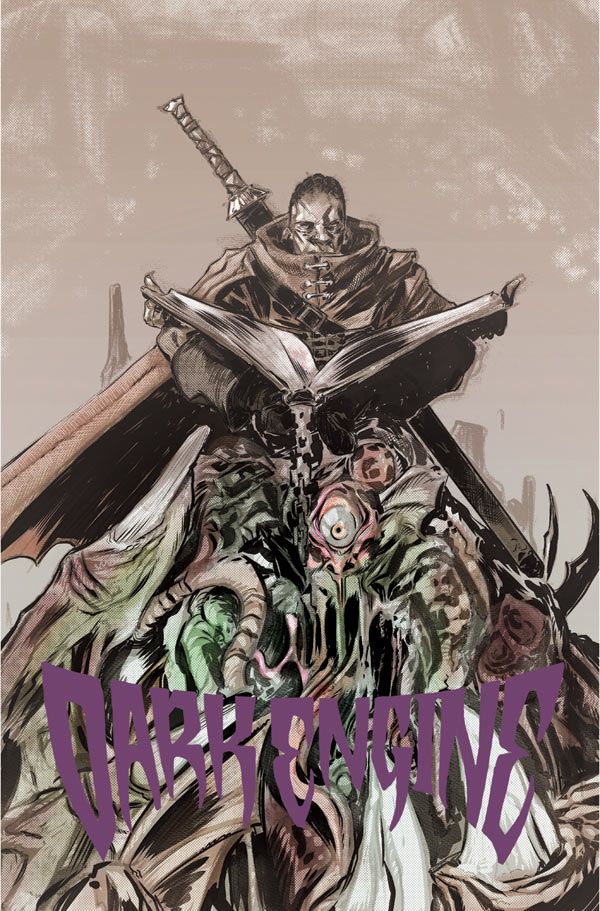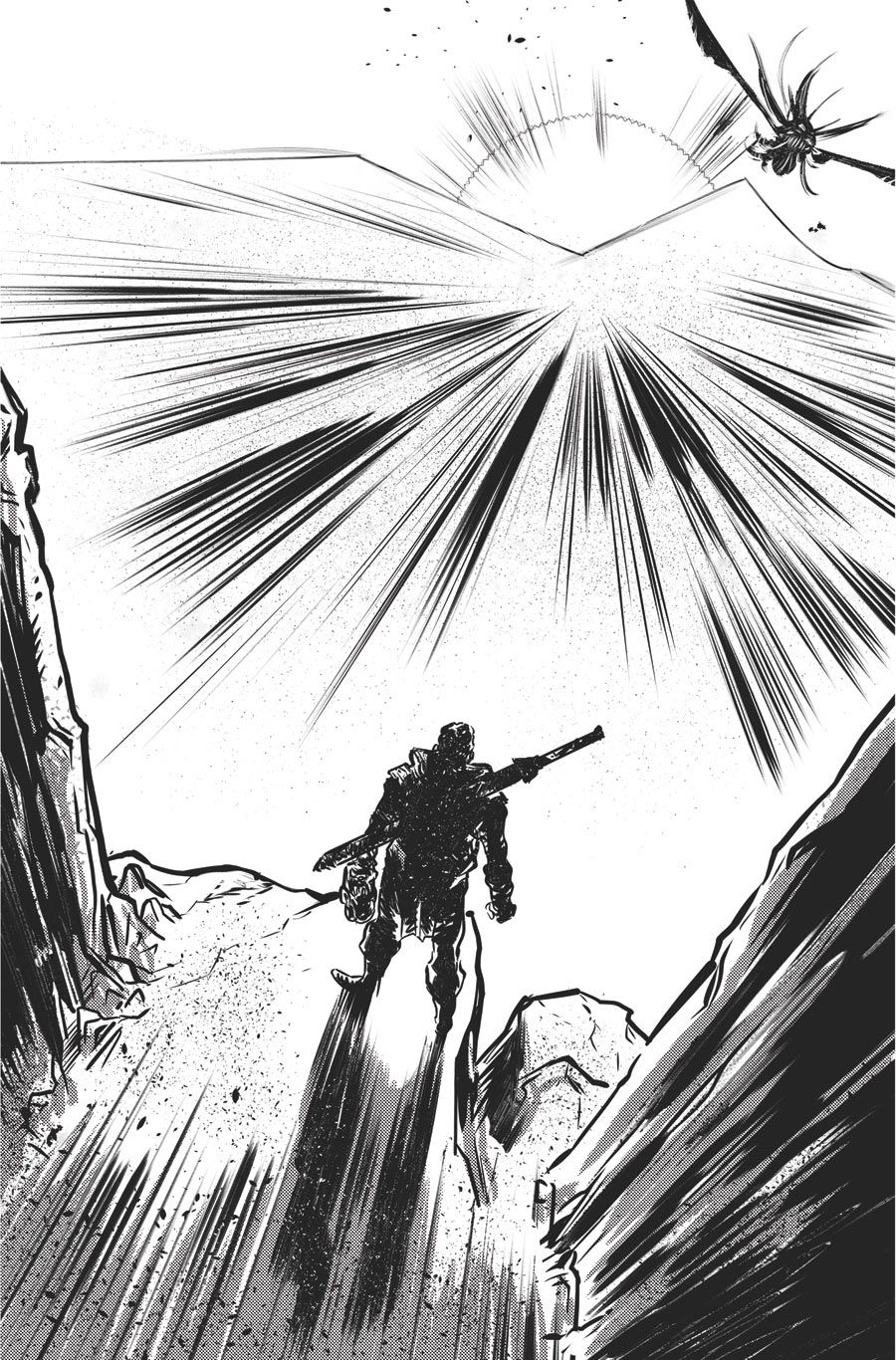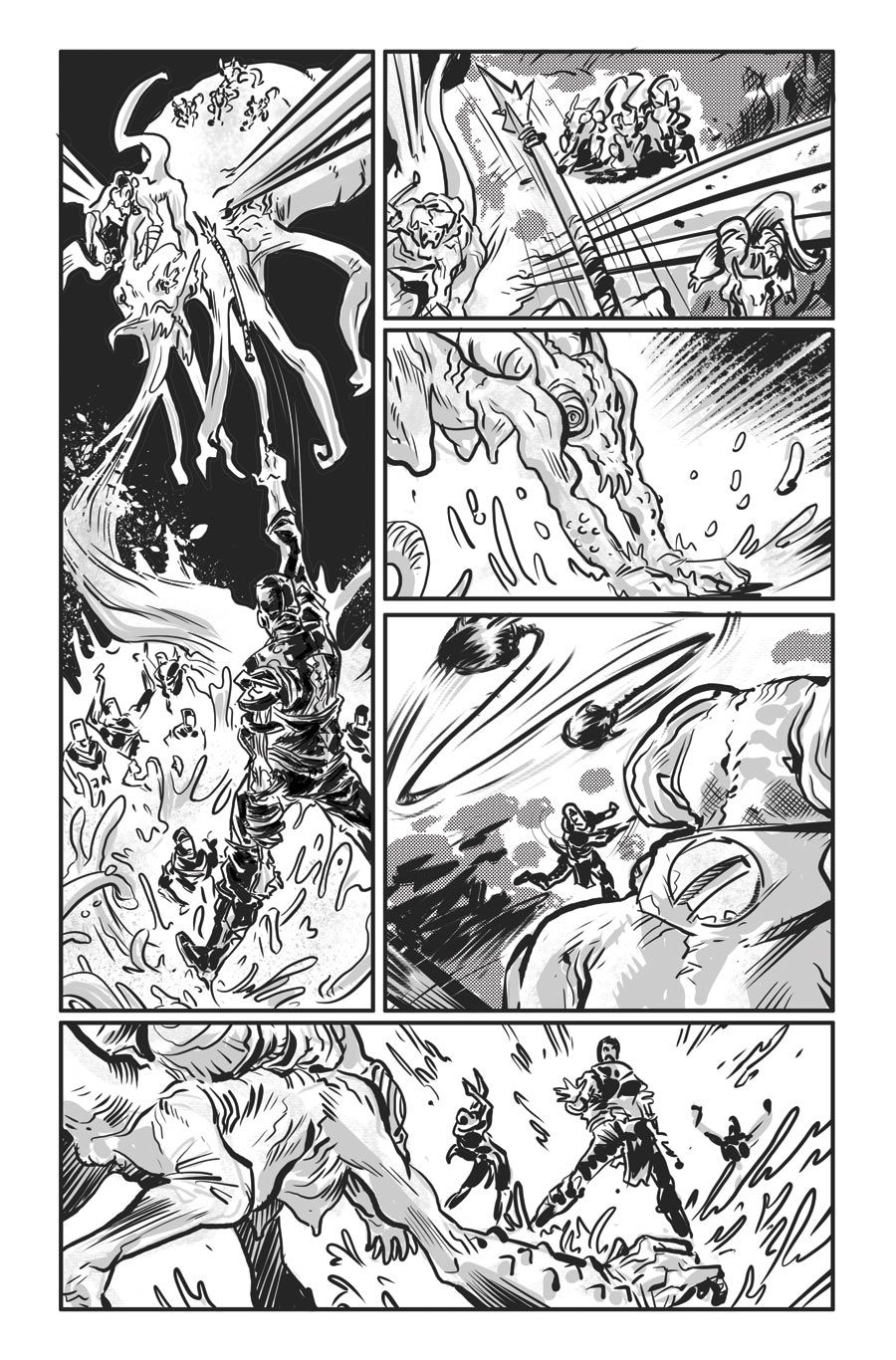Last year Ryan Burton and John Bivens launched "Dark Engine," their strange, post-apocalyptic monster horror tale, through Image Comics. After introducing a world ravaged by monsters, where a group of alchemists engineer a monster of their own to defeat them, the series is back for a second story arc. However, "Dark Engine" doesn't quite pick up exactly where the first story ends; rather, it opens with a character explaining the history of the world.
Described by Burton as "a study on just how dark and how far we can take the genre; hopelessness, and how people react in the face of it; and high adventure," "Dark Engine's" next arc takes the story in a new direction. The writer spoke with CBR ahead of the series' upcoming chapter, explaining what he and his creative partner are attempting with their new story.
CBR News: Issue #5 picks up after the first arc and collection. Can you talk a little about how you're trying to reintroduce the book with this issue?
Ryan Burton: By telling the origin of life. Or, rather, the type of life that now inhabits the world. By starting at the beginning, so that longtime readers got backstory, while new readers had an accessible starting point.
Where do we find your series' protagonist when we come back?
In desperation, really.
Our main character, the warrior Sym, was trapped at the bottom of the ocean, encased in a crystalline prison. The engine that allowed her to sporadically time-travel turned out to be sentient, erupted from her abdomen, vomited on her and everyone around her. The liquid hardened and became heavy, and drug her and her fellow prisoners down to the murky depths of the sea.
Were you approaching #5 arc thinking, this can work as a new #1 and a good jumping on point for new readers?
Absolutely. And it's certainly not as cryptic as Issue #1. It's quite full of exposition, albeit in a meaningful manner.
Related to that, why pick up with issue #5? I mean you're working in story arcs and taking a break between them, why not just have a new #1 every few issues?
Issue #5 just seemed reasonable, honestly. As a reader, I'd be frustrated if after a hiatus of three months, the creative team behind a book I followed decided to start each new arc with a new issue #1. That's not what John and I chose to do.
How much -- if anything -- do you want to say about the Inkface Ranger and the Ivory Wolf?
Two sides of the same coin. Black and white. Good and evil. The Ranger was raised by three wise men to hunt and destroy all the children of the Ivory Wolf, and, ultimately, the Ivory Wolf itself. He has a red stripe on his face that represents all the blood lost by man since the Life Story began.
The Ivory Wolf -- isn't it obvious who that is?
Talk a little about working with John Bivens, because he's really gotten to go wild on the book as far as designing creatures and landscapes. This issue is a little different structurally and is a showcase for what John does.
John is a charm to work with. As is Kelly Fitzpatrick and Thomas Mauer. I'm lucky to be working with all three. Simply put, John's a professional who loves the craft. Monsters and toxic environments and all the nightmares that come out at night -- those are all his playthings, his to mold and work with and put into our story. Like the sporedevils, like the Ivory Wolf.
We told the world's origin story in #5. Since we were dealing with complete horror and complete devastation, it felt natural to emphasize the scope by taking full advantage of two-page layouts. Everything felt so grand, so meaningful that way.
Now that you've established the world and the basic outline of how it works, what do you want to try to do differently in the next arc and moving forward?
Every page should be a surprise or hold a key bit of information. The creative team behind "Dark Engine" is having a conversation with the readers, but it needs to be a conversation full of surprises, full of mystery. A big theme that is ubiquitous in the second arc is "change." Emotionally, physically, etc. So, keeping this idea of having a conversation with our readers, I want them to think the conversation is headed one way, but in reality, when the time comes, we take a sharp turn when they least expect it.
Were you tryingto evoke Lovecraft and that style of writing in the text boxes you used in issue #5?
I've only read one of Lovecraft's yarns, "At the Mountains of Madness," and I found it lackluster. However, I wanted to the world's story -- what we call "The Life Story" in Issue #5 -- to be lyrical in nature. Something that read in an ebb and flow manner, a story you could imagine your grandfather whispering in your ear when you were little. I was reading a lot of Salman Rushdie at the time I was writing Issue #5, and I particularly enjoyed his musical prose. I wanted our issue to read in a similar fashion. Thomas Mauer did an excellent job in translating and designing my very stale Courier New font to something lovely on paper.
Bivens initially described the book as: "Sam Becket from 'Quantum Leap' having a love child with H.P. Lovecraft, and said lovechild likes to set stuff on fire and stab things." I keep thinking about all these postapocalyptic tales, from Thundarr the Barbarian to Kamandi. Was they a big influence on you?
My personal influences for the book run from Cormac McCarthy to Robert E. Howard, Michael Moorcock to Frank Herbert. Perhaps even Seamus Heaney's translation of "Beowulf." All of which, if one takes extra notice, have traceable elements within "Dark Engine."
I also enjoy playing video games when I have the time, and some of my favorites have had noticeable impacts on my writing. The savagery and fury from "God of War." The quiet poetry of "Shadow of the Colossus."
With the first arc behind you, I'm curious how you're approaching this new story arc and how you think about what it is and how it relates to what you did in the first arc?
This new arc is a little morestraightforward, less cryptic, than the last one. Questions will be answered, characters will evolve, but the stakes will be raised. None of the characters deserve a happy ending, because that wouldn't be a genuine experience. Every character will unravel on the pages, exposed, for the readers to dissect and wonder "what could have been." Since this is the second arc, John and I want to tie up the current story, so that when we decide to come back for the third arc, new threats, new promises and new hopes will be explored.

